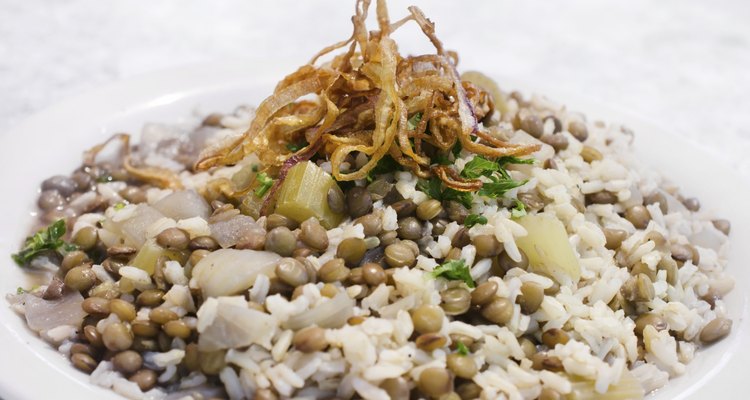
BCFC/iStock/Getty Images
For people who avoid meat and dairy products, legumes and whole grains generally offer a source of both magnesium and calcium. Rice and lentils each contain the two minerals. A dish that combines both is a good source of magnesium, but only a minor source of calcium.
Magnesium
The recommended daily amount of magnesium is 400 milligrams. A 1-cup serving of medium-grain cooked brown rice delivers 86 milligrams magnesium, or 21 percent of the magnesium you need each day. The same amount of medium-grain white rice has 24 milligrams, or 6 percent of the recommended daily value, or DV, for magnesium. A 1-cup serving of lentils provides 71 milligrams magnesium, or 18 percent of the DV for magnesium.
Calcium
The recommended daily amount of calcium is 1,000 milligrams. Each cup of cooked brown rice contains 19.5 milligrams calcium, or 2 percent of the calcium DV. White rice has about 6 milligrams of calcium per cup, or 1 percent of your daily calcium needs. The 38 milligrams of calcium in 1 cup of lentils translates into 4 percent DV for calcium.
Lentils and Rice
If you eat lentils and rice together, how much calcium and magnesium you receive depends on your portion size and the ratio of rice to lentils in your recipe. Most recipes call for two to three times more cooked rice than cooked lentils. A hearty serving of brown rice and lentils might contain 1 cup cooked brown rice and ½ cup cooked lentils. This combined dish delivers 30 percent of the magnesium and 3.7 percent of the calcium that you need each day If you use white rice in the lentil-rice dish, you’ll receive 15 percent of the recommended daily value for magnesium, and 2.5 percent of the recommended daily value for calcium.
Additional Nutrients
In addition to being a good source of magnesium, a meal of lentils and rice provides other important nutrients as well. The American Council on Exercise estimates that a serving of its "baked curried brown rice and lentil pilaf” contains 348 calories and 62 grams carbohydrates. It provides 13 grams fiber and 16 grams protein. Brown rice is high in B vitamins and minerals like iron, zinc, copper, potassium, manganese and phosphorus. Lentils are a good source of vitamin C, as well as several B vitamins and minerals. Lentils provide almost half of the folate you need each day in every ½-cup serving.
Related Articles
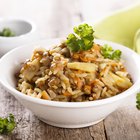
Rice and Lentils for Nutrition

How to Cook Rice in Foil

Nutrition From Beans & Rice
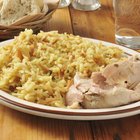
How to Make Traditional Chicken and Rice

How to Cook Ruby Red Jasmine Rice

How Long After a Sell-By Date Can You ...

How to Cook Brown Basmati Rice
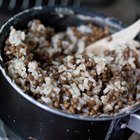
Rice & Lentil Diet

How to Make Creole Rice

How to Dry Out Sticky Rice
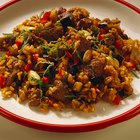
Brown Basmati Rice Cooking Directions

How to Make Homemade Dirty Rice
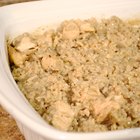
Baked Chicken & Rice With Mushroom Soup

How to Cook Japanese Rice
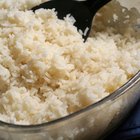
How to Cook Rice in the Cuisinart Rice ...

How to Remove Starch From Rice

How to Cook Rice in a Rice Cooker

How to Make Sweet Brown Rice
How to Cook Volcano Rice

How to Cook Rice Without a Rice Cooker
References
- American Council on Exercise: Baked Curried Brown Rice & Lentil Pilaf
- U.S. Food and Drug Administration: Calculate the Percent Daily Value for the Appropriate Nutrients
- National Institutes of Health Office of Dietary Supplements: Magnesium
- National Institutes of Health Office of Dietary Supplements: Calcium
Writer Bio
Ellen Douglas has written on food, gardening, education and the arts since 1992. Douglas has worked as a staff reporter for the Lakeville Journal newspaper group. Previously, she served as a communication specialist in the nonprofit field. She received her Bachelor of Arts from the University of Connecticut.
Photo Credits
BCFC/iStock/Getty Images